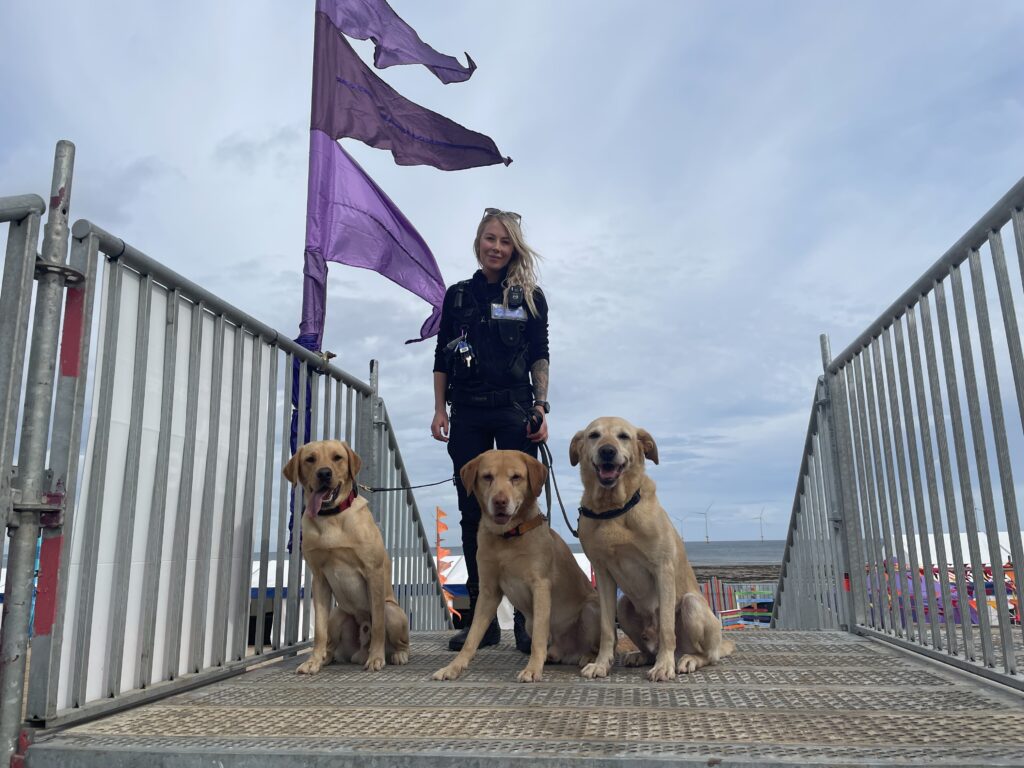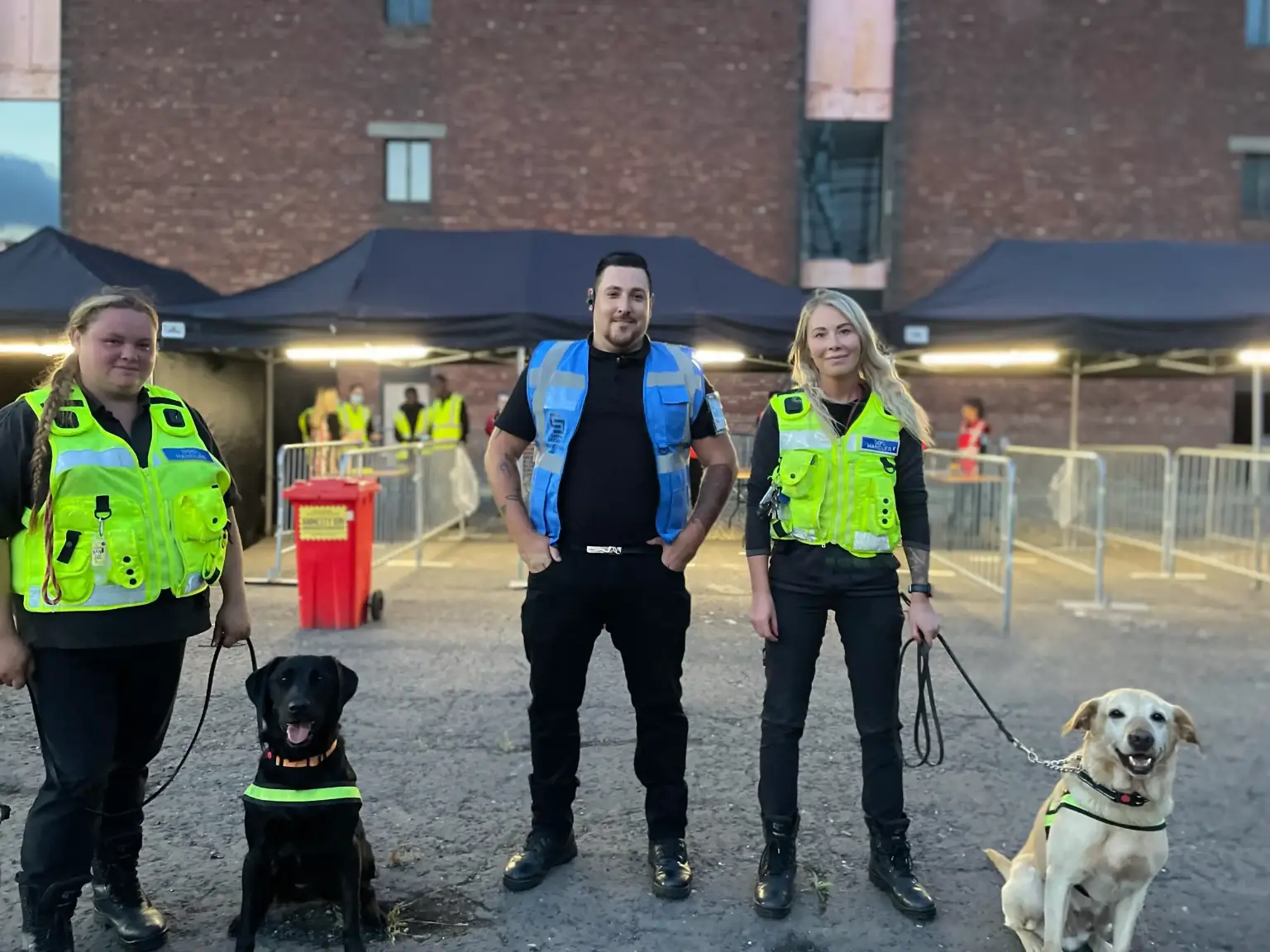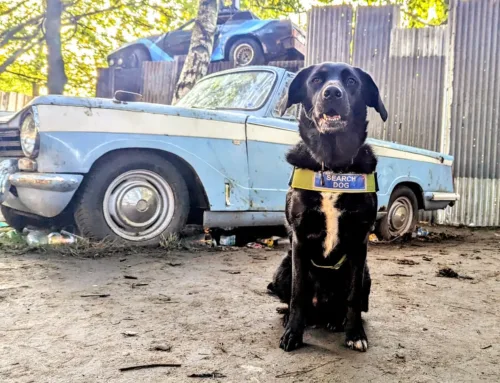Canine detection has long been a cornerstone of security measures, with specially trained dogs serving as a critical component in the identification of illicit substances, explosives, and other threats. Their acute sense of smell and ability to detect minute traces of compounds have made them invaluable in safeguarding public spaces, events, and critical infrastructure.
The rise of sophisticated technological devices has sparked a lively debate about the most effective means of detection. With the advent of advanced scanners, chemical sniffers, and artificial intelligence, some argue that technology could one day replace the need for detection dogs. This conversation has become especially pertinent in industries where the stakes of detection are incredibly high.
Despite the remarkable strides made in detection technology, there are still numerous scenarios where detection dogs have demonstrated superior effectiveness and remain utterly indispensable. Their unparalleled smelling abilities, coupled with their dynamic responsiveness in the field, underscore the fact that these four-legged operatives are more than just tools; they are partners that technology alone cannot replicate.
The Innate Abilities of Detection Dogs
Dogs possess extraordinary olfactory abilities that eclipse even the most advanced technological sensors. A detection dog’s nose is not just sensitive; it can differentiate between a vast array of individual scents and even detect odours that are masked by other smells. This sensitivity allows them to identify specific substances among a confusing mixture of background odours, a task that is often beyond the capability of current technology.
The flexibility and adaptability of canine senses are unparalleled, and detection dogs can transition between different environments and tasks with relative ease, adjusting their detection strategies on the fly. They can work in crowded, chaotic environments as effectively as they can in quiet, controlled settings. Their ability to interpret and react to non-verbal cues from their handlers enhances their functionality, making them a versatile asset in the field of detection.
Real-life examples underscore the effectiveness of detection dogs in situations where technology falls short. There have been numerous instances where dogs have identified drugs concealed in ways that are designed to trick electronic sensors. For instance, dogs have successfully detected drugs hidden inside sealed containers or within electronic equipment, where machines have previously passed over without alerting the human operators. Such cases demonstrate the invaluable role that these canine detectives play in maintaining safety and security across various scenarios.
Technological Detection Methods
The technological landscape of detection solutions is diverse, including an array of sophisticated equipment designed to identify illicit substances and dangerous materials such as explosives and pyrotechnics. X-ray machines, for instance, are widely used in airports and shipping facilities to scan luggage and freight for contraband and weapons. Chemical sniffers, which can detect a range of compounds in the air or on surfaces, are also deployed in various security checkpoints. Other high-tech devices include mass spectrometry instruments, which analyse the composition of substances, and advanced biometric systems, which are used to reinforce security through unique personal identifiers like fingerprints and iris patterns.
These technologies have a number of advantages. They can process high volumes of items quickly, reducing human error and maintaining a consistent level of vigilance over time. Many of these devices can store and log data, creating records that can be analysed or referenced later. They are also non-intrusive and can maintain the flow of traffic through security checkpoints without the need for physical searches.
However, despite these benefits, such technologies are not without limitations. X-ray machines, for instance, require objects to be placed through a conveyor, limiting their use to controlled environments. They can miss substances concealed within organic materials that appear transparent on screens. Chemical sniffers, while sensitive, may generate false positives due to cross-contamination or be limited in the number of substances they can detect simultaneously. Additionally, most technology solutions lack the mobility and intuitive responsiveness of a dog, and can be hampered by malfunctions or require recalibration when conditions change.
There are numerous situations where technology may not be as effective as canine detection. For example, in large-scale outdoor venues or complex environments with multiple entry points, the practicality of setting up and maintaining technological solutions becomes challenging. The requirement for a direct line of sight or the need for substances to pass through a scanner means that only items brought near the equipment can be checked, whereas detection dogs can roam and survey large areas more freely. Additionally, in high-stress or rapidly evolving situations, the versatility and quick adaptability of dogs can outperform the more static nature of machinery. It is in these dynamic and unpredictable environments that the value of a well-trained detection dog becomes most apparent.

The Human-Canine Bond in Detection
The unique partnership between a handler and their dog is essential to the success of canine-based security operations. This relationship is built on trust, respect, and communication, with both parties working together towards a common goal. Inquest Detection handlers undergo extensive training to understand and interpret their canine partners’ signals, and in turn, dogs are taught to follow their handlers’ instructions and navigate complex environments. It’s a genuine relationship that just can’t be replicated between man and machine.
Dogs have a natural ability to read and respond to human cues, a skill that significantly enhances their detection work. Through subtle changes in a handler’s body language or vocal commands, dogs can be directed to investigate specific areas more closely or alerted to changes in the task at hand. This two-way communication allows for a dynamic approach to detection, with the dog swiftly adapting its behaviour based on immediate feedback from the handler.
Beyond the operational advantages, there are emotional and psychological benefits to working with dogs over machines. The companionship of a dog can reduce stress and increase job satisfaction for handlers, fostering a positive working environment. The presence of a dog can also have a calming effect on the public, making security checks a more amicable experience. Not only that, dogs offer comfort and a sense of safety, creating a more approachable and human aspect to security that technology alone cannot provide.
The bond between handler and dog is not just about effectiveness in detection work; it’s about forming a team whose members care for and protect each other. This intangible yet powerful connection is what sets canine detection apart and ensures that these teams are not only efficient but also a valued part of the security community.
Situational Superiority of Canine Detection
Canine detection teams have a situational advantage in most environments and contexts where technology may not be as adept or efficient. Dogs excel in open areas such as parks, stadiums, and festival grounds, where their mobility allows them to cover vast expanses quickly and efficiently. Crowded spaces like airports, train stations, and entertainment venues also benefit from the presence of detection dogs. In these environments, dogs can manoeuvre through the crowds of people, pinpointing sources of concern with minimal disruption.
The varied terrain poses little challenge for canine teams, as dogs can navigate rough, uneven ground or tight spaces where equipment might be impractical. Their capacity to detect scents on the wind also allows them to identify threats from a distance, offering an early warning system that stationary technology cannot match.
Technological detection methods often struggle in dynamic or unpredictable situations. In rapidly evolving security incidents, setting up and calibrating machinery can be time-consuming and may not offer the flexibility required to adapt to changing circumstances. Devices tend to be limited to specific checkpoints or predefined areas of operation, which can be a significant disadvantage in fluid scenarios where threats could emerge from any direction.
Detection dogs also play a critical role in rapid response and emergency scenarios. Their speed and agility enable them to search areas for survivors or hazards quickly in the aftermath of disasters such as earthquakes or explosions. In these situations, the dogs’ instincts and training can save lives by allowing them to locate people trapped under debris, often much faster than humans can sift through the rubble.
The psychological impact of dogs in emergency situations should not be underestimated. They not only serve as detectors but also as a source of comfort and reassurance to victims and emergency personnel alike. The versatility and emotional benefits of working with detection dogs reinforce their essential role in a comprehensive security strategy, showcasing their situational superiority in various operational contexts.
Technological Complements to Canine Detection
Technology serves as a force multiplier when combined with the innate capabilities of detection dogs. By equipping canine units with GPS trackers, handlers can monitor their dogs’ movements precisely, ensuring thorough coverage of search areas and quick redirection when necessary. Wearable cameras on dogs can transmit live video feeds, granting handlers the ability to assess remote situations and make real-time decisions from a distance.
In practice, integrated security systems often combine the acute senses of dogs with the persistent and calculating nature of technology. You can see this at work in airports, where dogs complement the mechanical screening of luggage by X-ray machines, adding a dynamic and responsive layer to the security process. Similarly, border security operations may pair dogs with advanced imaging technology to uncover concealed compartments in vehicles that might otherwise go undetected.
Looking ahead, the world of detection is set to evolve with the continuing innovation in artificial intelligence and robotics. Hybrid detection models will likely capitalise on machine learning algorithms to refine threat recognition and predictive analytics, informed by data collected from canine-assisted operations. In tandem, we might witness the deployment of robots capable of safely deploying canine units into high-risk environments, mitigating danger to human handlers.
The trajectory of detection strategies is clear: a future where technology does not replace but empowers the sensory prowess of canine teams. Combining the speed, agility, and olfactory sensitivity of dogs with the persistent, analytical, and far-reaching capabilities of machines presents an optimal model for maintaining safety and responding to threats swiftly and effectively. This synergy aims to create a robust and adaptive security infrastructure, integral to proactive defence mechanisms in an ever-changing threat landscape.
Conclusion: An Irreplaceable Member of the Security Team
In conclusion, detection dogs hold an irreplaceable role within the security and detection fields. Their unparalleled sensory abilities, coupled with their agility and responsiveness, make them indispensable in a variety of settings—from crowded airports to disaster-stricken sites. The symbiotic relationship between the handler and dog creates a dynamic and adaptable approach to security that technology alone cannot replicate.
It is essential to acknowledge and celebrate the unique contributions of canine teams. These loyal companions not only provide exceptional service in detecting threats and saving lives but also offer emotional support and a sense of comfort to both handlers and the public. Their presence softens the often intimidating facade of security measures and adds a dimension of humanity and compassion.
As we advance into an increasingly technological world, the importance of four-legged detectors remains undiminished. While machines and artificial intelligence can process and analyse data at remarkable speeds, they lack the instinctive qualities that dogs possess. The future of security lies in a balance, leveraging the latest advancements in technology while upholding the valued traditions and proven effectiveness of canine detection teams.
Embracing this balance ensures that we continue to safeguard our communities with the most comprehensive and empathetic approach possible. Dogs have been our loyal companions for millennia, and in the realm of security, their role is not only cherished but also critical. As we navigate the complexities of modern threats, let’s forget the power of the paw in keeping our world safe.
If you feel your business, organisation, event or venue would benefit from the use of a canine detection team, then get in touch! We’ll be happy to tell you more.




